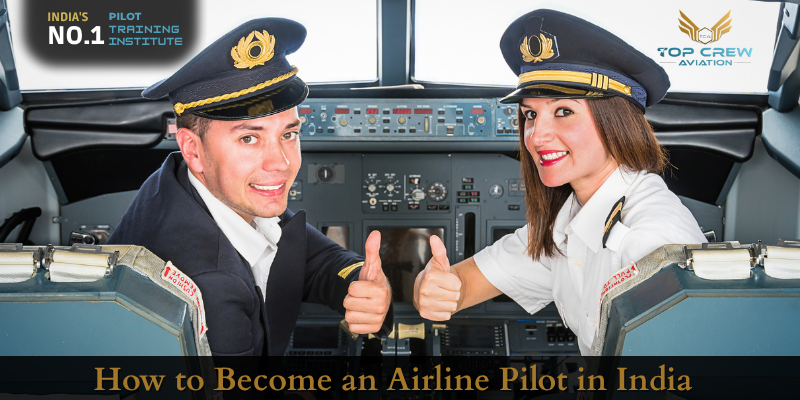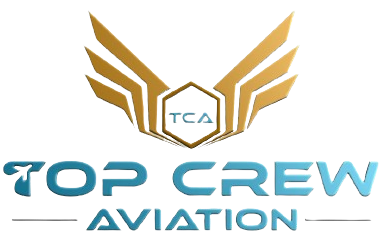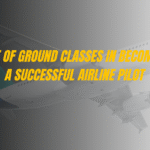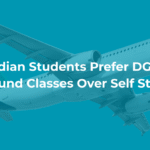
Flying an aircraft thousands of feet above the ground is not just a profession—it’s a passion, a lifestyle, and for many, a lifelong dream. With India’s booming aviation sector and increasing demand for skilled pilots, now is the perfect time to start your journey to become an airline pilot.
If you’ve just completed your 12th grade and are wondering, “How do I become an airline pilot in India?”—this blog is your complete, detailed, and step-by-step roadmap. Whether you want to fly Airbus A320s for IndiGo or dream of piloting long-haul international jets, everything you need to know starts here.
Who Is an Airline Pilot?
An airline pilot is a certified commercial pilot who operates passenger or cargo aircraft for scheduled airlines. They receive comprehensive training, hold advanced licenses, and must meet strict health and technical standards.
Responsibilities of an Airline Pilot:
- Preparing flight plans
- Performing pre-flight checks
- Communicating with ATC (Air Traffic Control)
- Ensuring the safety of passengers and crew
- Navigating and flying aircraft in various conditions
- Managing in-flight emergencies if they arise
Types of Airline Pilots
In commercial airlines, there are primarily two pilot positions:
First Officer (Co-Pilot)
- An entry-level airline pilot role after obtaining a CPL.
- Assists the captain in controlling the aircraft.
- Gains experience before becoming a captain.
Captain (Pilot-in-Command)
- Senior-most pilot on the aircraft.
- Responsible for the safety of the flight and crew.
- Requires an ATPL and significant flying experience (1500+ hours).
Eligibility to Become an Airline Pilot in India
Becoming an airline pilot in India requires fulfilling specific academic, medical, and regulatory criteria set by the Directorate General of Civil Aviation (DGCA).
Academic Qualifications:
Candidates must have passed Class 12th with Physics and Mathematics from a recognized board. If you come from a non-science background, you can still become eligible by passing Physics and Mathematics through NIOS (National Institute of Open Schooling).
Age Criteria:
The minimum age to begin pilot training is 17 years. Although there is no official upper age limit, airlines generally prefer candidates under the age of 35 for commercial pilot recruitment.
Citizenship:
You must be an Indian citizen or hold an OCI (Overseas Citizen of India) card to be eligible for pilot training and airline jobs in India.
Medical Fitness:
To join a flying school, you need a valid DGCA Class 2 Medical Certificate, issued by an approved aviation medical examiner. Before applying for a Commercial Pilot License (CPL), a Class 1 Medical Certificate is mandatory to ensure you meet the physical and mental fitness standards required for professional flying.
Meeting these eligibility requirements is the first step toward starting your journey as an airline pilot in India.
Step-by-Step Guide to Becoming an Airline Pilot
Becoming an airline pilot in India is a dream career for many aviation enthusiasts. With the rapid growth of the Indian aviation sector and increasing demand for trained pilots, this profession offers exciting opportunities, high salaries, and international exposure. If you’re wondering how to become an airline pilot in India, here’s a complete step-by-step guide to help you start your journey.
Step 1: Complete Class 12th with Physics and Mathematics
Your first step is to complete your higher secondary education (10+2) with Physics and Mathematics as compulsory subjects. This is a mandatory requirement by the Directorate General of Civil Aviation (DGCA).
- Minimum eligibility: Class 12th (Science stream)
- Non-science students can still apply by completing Physics and Math through NIOS (National Institute of Open Schooling).
Step 2: Clear DGCA Class 2 Medical Examination
Before joining any pilot training in India, you need to undergo a DGCA Class 2 Medical examination.
- Conducted by DGCA-approved aviation doctors
- Includes physical, vision, hearing, and overall fitness tests
- Once cleared, you’ll receive a Class 2 Medical Certificate, which is necessary for enrollment into flying schools.
Step 3: Choose a Reputed DGCA-Approved Flying School
Selecting the right flying school in India is a critical step. Look for an institute that is DGCA-approved and has a good track record. Consider the following factors:
- Reputation and student reviews
- Number and type of aircraft in their fleet
- Experienced instructors
- Ground school quality
- CPL exam pass rate
- Tie-ups for type rating with international training centers
Step 4: Enroll in Commercial Pilot License (CPL) Training
Once you’ve selected a school, enroll in their CPL training program, which includes:
- Ground School Training – Covers theoretical subjects like Air Navigation, Aviation Meteorology, Air Regulations, Technical General, and Technical Specific.
- Flight Training – Requires a minimum of 200 hours of flying time, including solo flights, cross-country, and night flying.
- Simulator Training – Helps prepare you for real-time flight scenarios and complex situations.
Step 5: Clear DGCA Written Exams and RTR
During your CPL training, you must clear the following DGCA pilot exams:
- Air Navigation
- Meteorology
- Technical General and Technical Specific
- Air Regulations
- RTR-A (Radio Telephony Restricted – Aeronautical) license issued by WPC
Clearing these exams is essential to receive your CPL.
Step 6: Obtain Your Commercial Pilot License (CPL)
After completing all ground and flight training and passing the DGCA exams, you can apply to the DGCA for your Commercial Pilot License in India.
- This license officially qualifies you to work as a professional pilot.
- You must also obtain a DGCA Class 1 Medical Certificate before applying.
Step 7: Undergo Type Rating Training
Type Rating is a specialized training program that qualifies you to fly specific commercial aircraft like the Airbus A320 or Boeing 737.
- Though optional, most airlines prefer or require candidates to already be type-rated.
- It significantly improves your chances of airline recruitment and reduces training costs for the airline.
Step 8: Apply for Jobs in Airlines
Once you have your CPL, Class 1 Medical, and preferably a Type Rating, you can start applying for airline jobs in India.
- Entry-level role: Junior First Officer or First Officer
- Requirements: Good flying skills, communication skills, and knowledge of aviation operations
- Prepare for airline interviews, simulator assessments, and aptitude tests
Pilot Licenses Required
| License | Description | Minimum Flight Hours |
| PPL (Private Pilot License) | For hobby flying or personal use | 40–50 hrs |
| CPL (Commercial Pilot License) | For commercial airline jobs | 200 hrs |
| ATPL (Airline Transport Pilot License) | For promotion to Captain | 1500 hrs + additional exams |
What Is a Type Rating?
Type Rating is an additional qualification to fly specific aircraft like Airbus A320 or Boeing 737. Most airlines require a Type Rating before hiring.
Why It’s Important:
- Airlines want pilots trained on their specific aircraft.
- It enhances your job prospects.
- It usually takes 1–2 months and costs ₹12–25 lakhs.
Best DGCA-Approved Flying Schools in India
Here are the top flying academies in India:
- Top Crew Aviation – Jaipur & Delhi
- IGRUA – Rae Bareli (Government-owned)
- Indira Gandhi Institute of Aeronautics – Chandigarh
- Madhya Pradesh Flying Club – Indore
- GATI Aviation – Hyderabad
Always verify DGCA approval on dgca.gov.in
Cost of Becoming an Airline Pilot in India
| Item | Estimated Cost |
|---|---|
| CPL Training (200 hours) | ₹35 – ₹45 lakhs |
| Type Rating | ₹12 – ₹25 lakhs |
| Medical Tests (Class 2 & 1) | ₹20,000 – ₹50,000 |
| Exams & Documentation | ₹1 – ₹2 lakhs |
| Total | ₹50 – ₹70 lakhs (on average) |
Note: Some airlines offer cadet pilot programs which include CPL + Type Rating + Job Assurance, but costs may exceed ₹80 lakhs.
Airline Pilot Salary in India
| Role | Monthly Salary (INR) |
| Trainee Pilot (Zero hour) | ₹25,000 – ₹50,000 (stipend) |
| First Officer (0–1500 hrs) | ₹1.5 – ₹3 lakhs |
| Senior First Officer | ₹3 – ₹5 lakhs |
| Captain (2500+ hrs) | ₹6 – ₹10 lakhs |
| Senior Captain | ₹10 – ₹15+ lakhs |
International airlines offer even higher pay packages and perks.
Career Progression of an Airline Pilot
- Student Pilot (PPL)
- Trainee Pilot (CPL)
- First Officer (Co-Pilot)
- Senior First Officer
- Captain (Commander)
- Training Captain/Simulator Instructor
- Chief Pilot or Fleet Manager
Conclusion
Becoming an airline pilot in India is a rewarding and exciting career choice. With the right education, training, and determination, you can build a high-paying and fulfilling career flying aircraft for top domestic and international airlines.
While the journey requires investment—both time and money—the long-term career growth, prestige, and adventure make it worth every step.
Ready to take off? Start with a trusted flying school like Top Crew Aviation and give wings to your dream!
Suggestion URL:
Frequently Asked Questions
No FAQs found.



